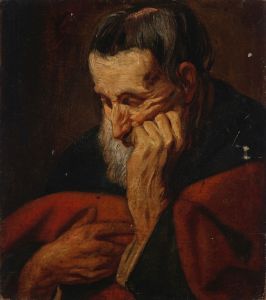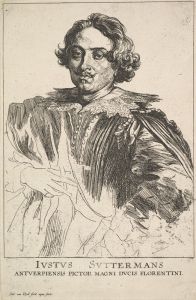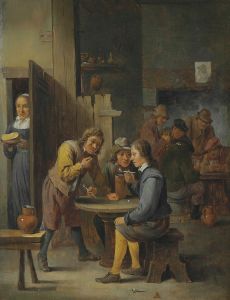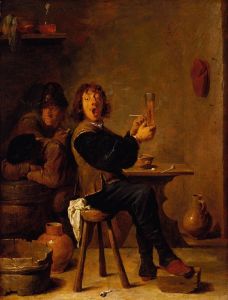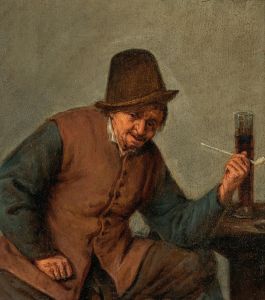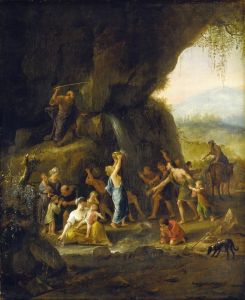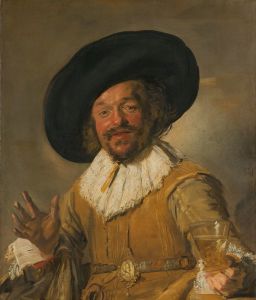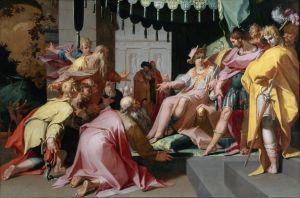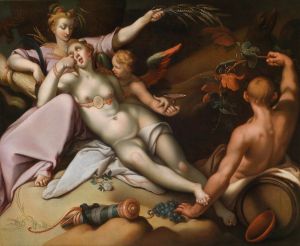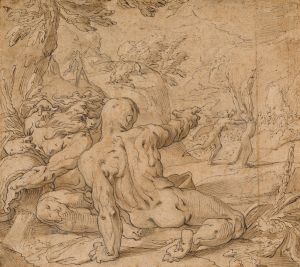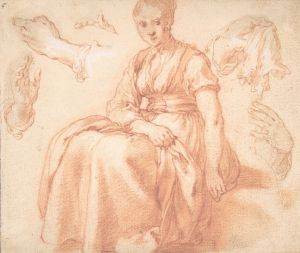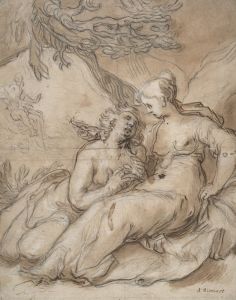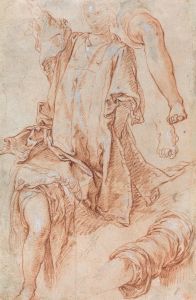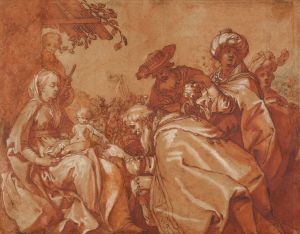
Studienblatt; Landwirtschaftliche Geräte und ein Stierkopf
A hand-painted replica of Abraham Bloemaert’s masterpiece Studienblatt; Landwirtschaftliche Geräte und ein Stierkopf, meticulously crafted by professional artists to capture the true essence of the original. Each piece is created with museum-quality canvas and rare mineral pigments, carefully painted by experienced artists with delicate brushstrokes and rich, layered colors to perfectly recreate the texture of the original artwork. Unlike machine-printed reproductions, this hand-painted version brings the painting to life, infused with the artist’s emotions and skill in every stroke. Whether for personal collection or home decoration, it instantly elevates the artistic atmosphere of any space.
Abraham Bloemaert was a prominent Dutch painter and printmaker, known for his contributions to the development of Dutch art in the late 16th and early 17th centuries. He was a versatile artist, adept in various styles ranging from Mannerism to early Baroque. Bloemaert's works often depicted religious themes, landscapes, and genre scenes, and he was also known for his detailed studies and sketches.
"Studienblatt; Landwirtschaftliche Geräte und ein Stierkopf" is one of Bloemaert's works that translates to "Study Sheet; Agricultural Implements and a Bull's Head." This piece is a study drawing, which suggests that it was likely used as a preparatory work or an exercise in observation and technique. Study sheets were common among artists of Bloemaert's time, serving as a means to practice and refine their skills in rendering various subjects.
The drawing features agricultural implements alongside the head of a bull, indicating Bloemaert's interest in rural and pastoral themes. Such subjects were prevalent in Dutch art, reflecting the agrarian society of the Netherlands during the period. The inclusion of agricultural tools and the bull's head may also suggest an exploration of the relationship between humans and nature, a theme that was often explored in art of the time.
Bloemaert's attention to detail is evident in the meticulous rendering of the implements and the anatomical accuracy of the bull's head. This focus on detail is characteristic of Bloemaert's work and highlights his skill in capturing the textures and forms of different objects. The study sheet format allowed Bloemaert to experiment with composition and technique, providing insight into his artistic process.
Bloemaert was a significant figure in the Utrecht School, a group of artists based in the city of Utrecht who were influenced by Caravaggio's dramatic use of light and shadow. While "Studienblatt; Landwirtschaftliche Geräte und ein Stierkopf" does not exhibit the dramatic chiaroscuro typical of Caravaggisti, it does demonstrate Bloemaert's foundational skills that would inform his more complex compositions.
The drawing is an example of Bloemaert's broader oeuvre, which includes both paintings and prints. His work was influential in the development of Dutch art, and he was a respected teacher, counting among his pupils notable artists such as Gerard van Honthorst and Hendrick ter Brugghen. Bloemaert's legacy is evident in the continued appreciation of his work and his impact on subsequent generations of artists.
In summary, "Studienblatt; Landwirtschaftliche Geräte und ein Stierkopf" is a testament to Abraham Bloemaert's skill as a draftsman and his interest in the everyday life and rural themes of his time. The study sheet provides valuable insight into his artistic practice and the cultural context of the Dutch Golden Age.





